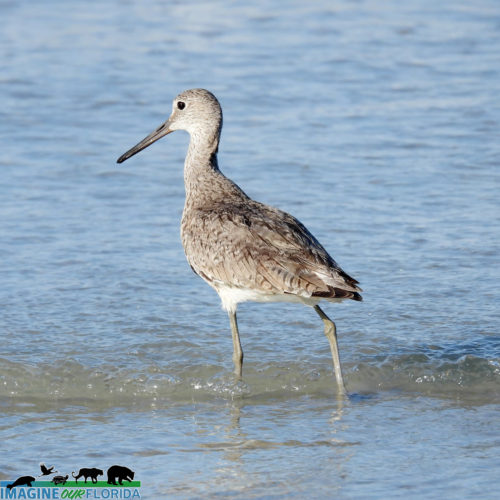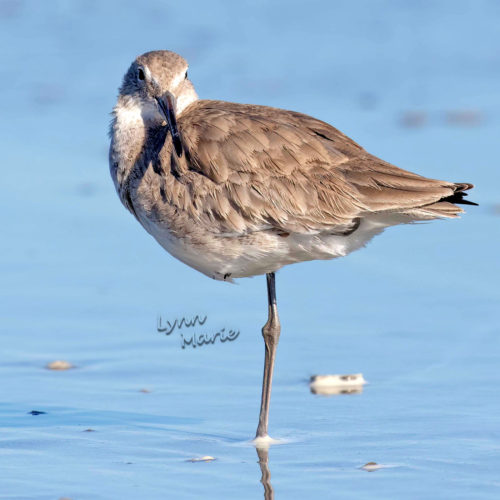Willets (Tringa semipalmata) are large, stocky shore birds with long legs and thick, straight bills considerably longer than their head. Their wings are broader and rounder than many other shorebirds, and the tail is short and squared off at the base. Willets measure 13.0-16.1 inches with a wingspan of 27.6 inches and weigh about 7.0-11.6 oz. Willets are gray or brown in color. During flight, they display a striking white and black stripe along each wing. Their colors in summer are mottled gray, brown, and black; in winter, they are much plainer gray. They are nocturnal migrants, only living in the coastal Florida areas during the winter nonbreeding season.
The Willet’s widespread wintering range makes them one of the easiest shorebirds to spot. They inhabit open beaches, bay shores, marshes, mudflats, and rocky coastal zones. In winter, Willets eat small crabs, worms, clams, and other invertebrates from saltwater marshes and along open coastlines. Willets can feed during the night and day, grabbing their prey from the surface using their sensitive bill tip.
Although Willets are common in some areas, they declined between 1966 and 2014, according to the North American Breeding Bird Survey. The 2014 State of the Birds Watch List has listed this species as a risk of becoming threatened or endangered without conservation action. Both adults and fledglings are also vulnerable to collisions with power lines built through wetland breeding sites. During the 19th century, Willets were widely hunted for food. It took the passage of the Migratory Bird Treaty Act in 1918 to begin the Willet’s comeback to its present numbers.


